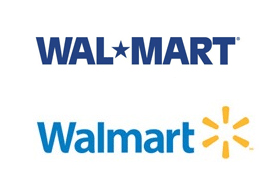Businesses such as Walmart and McDonalds are thriving in these hard times because they have positioned themselves as the brand that will save you some cash. Whether or not these merchants actually save you money compared to other stores of similar product and price-range, doesn’t really matter when the consumer immediately associates the brand with value and savings.
 Despite what some may say about branding or rebranding your company in tough economic times, Walmart recently rolled out a new, more personal, softer logo and branding campaign (they even removed the hyphen.) This new identity, with a revived use of light and color, was said to create a more accessible and experiential feel for the store. With the inclusion of this new look (and of course the horrific downturn in the economy), Walmart has seen a steady boost in sales this summer and fall when most other retailers are down close to double-digits.
Despite what some may say about branding or rebranding your company in tough economic times, Walmart recently rolled out a new, more personal, softer logo and branding campaign (they even removed the hyphen.) This new identity, with a revived use of light and color, was said to create a more accessible and experiential feel for the store. With the inclusion of this new look (and of course the horrific downturn in the economy), Walmart has seen a steady boost in sales this summer and fall when most other retailers are down close to double-digits.
So in conclusion, don’t let the image of your business suffer because you think going the cheap route on your company’s identity is a way to cut costs. Just remember no matter what you are selling, clients and consumers alike want to do business with companies that appear professional – if for no other reason then to make certain the money they are spending with YOUR company is the correct choice.
Holly Davis hdavis@igpr.com